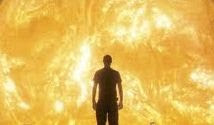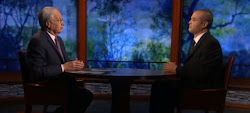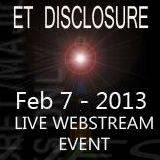Paste/click the link if you don't receive the images.
http://www.philipcoppens.com/shroud.html
Be Well.
David
The Unknown Shroud
Largely forgotten, in a barely exposed part of the cathedral of the Spanish town of Oviedo, rests the sudarium: a cloth that proves the Turin Shroud is more than likely genuine… and that the resurrection of Jesus occurred.
Philip Coppens
 The Turin Shroud is one of the most controversial relics ever. Said to be the burial cloth of Jesus, for some, it is the ultimate relic, proving the reality of his resurrection; for academics, it remains an enigma, for how the image has become embedded on the cloth has never been fully reproduced. For others, it is nothing more than a medieval fake, for which a 1988 carbon-dating result has to provide the evidence.
The Turin Shroud is one of the most controversial relics ever. Said to be the burial cloth of Jesus, for some, it is the ultimate relic, proving the reality of his resurrection; for academics, it remains an enigma, for how the image has become embedded on the cloth has never been fully reproduced. For others, it is nothing more than a medieval fake, for which a 1988 carbon-dating result has to provide the evidence.
The Shroud therefore very much acts like a mirror: if you believe in Christ and the Resurrection, one is likely to believe it is genuine. If you are an atheist, you will quickly adhere to the official conclusion which says it’s a medieval fake. That is in fact the official position of the Church: they have no opinion on the Shroud as such, and leave it to individual Christians to believe its veracity, or not. Apart from the Church’s position, there is also a scientific position. Alas, that “scientific position” is not so scientific at all. It relies on the 1988 carbon-dating, which placed the shroud’s origins between 1260 and 1390, but there is one important problem with this: there is no conclusive evidence to show that the material that was submitted for carbon-dating originates from the shroud. Indeed, intriguingly if not mysteriously, the key portion of the sample taking, in which pieces of the shroud were placed in containers to be sent out for analysis, for this portion, the Vatican demanded that the video-cameras, which were there to record the entire process, and specifically this key sequence, were turned off.
If it were a crime scene investigation, it would mean that the carbon-dating results were inadmissible as evidence. Which would mean that we would have to rely on other evidence, most if not all of which suggests that the shroud is much older than the 14th century. For example, it is known that there is pollen on the shroud, which show the Shroud was once in Palestine. We know that the weaving technique of the cloth is contemporary with Jesus. And that there is genuine blood on the shroud, blood group AB, rare in Europe, but common in the Middle East. That the position of the hands is consistent with a person genuinely crucified. And more. As such, even many scientists now argue that the carbon-dating is the odd-one out, and should be treated with suspicion – though few dare to point the finger directly to the Vatican as the culprit, instead arguing other problems with the tests might have occurred.
The Shroud has been responsible for dozens of books and documentaries, most of whom treat the shroud in isolation. This, alas, is their biggest shortcoming, for what is little known, but totally factual, is that the shroud has a little brother: the Oviedo sudarium, which has been residing in Spain for more than a millennium.
The Oviedo Shroud or sudarium is a bloodstained sweat cloth, believed to have been wrapped around the head of Jesus Christ after his death – as mentioned in the Gospel of John. Unlike the Turin Shroud, it does not show an image; merely blood marks and like. Interest in the Oviedo sudarium came about when Mgr. Ricci visited Oviedo in 1965. He was in fact the first to suggest that there was a correspondence between the stains on the cloth of Oviedo and those found on the Shroud’s face area. It would take a further two decades before a local organisation was created that would begin a series of scientific tests that could prove the veracity of the Gospels.
 The Oviedo Shroud was only meant to be used for a short period of time. The linen is composed of taffeta ligaments, with the threads twisted in the form of a Z, which is the simplest form of weaving. It is a fairly coarse, inexpensive cloth, unlike the Turin Shroud, which would have remained around the dead person’s body for a year or so, when the bones of the deceased would have been collected and placed in an ossuary. As mentioned, unlike the Turin Shroud, there is no image on the sudarium; it contains “merely” stains of blood and bodily fluids. Measuring 85 by 53 centimetres (34x21 inches), the sudarium is kept in the Cathedral of San Salvador in Oviedo, where it is put on display three times per year: on Good Friday, the Feast of the Triumph of the Cross on September 14, and its octave on September 21, the feast of St Matthew.
The Oviedo Shroud was only meant to be used for a short period of time. The linen is composed of taffeta ligaments, with the threads twisted in the form of a Z, which is the simplest form of weaving. It is a fairly coarse, inexpensive cloth, unlike the Turin Shroud, which would have remained around the dead person’s body for a year or so, when the bones of the deceased would have been collected and placed in an ossuary. As mentioned, unlike the Turin Shroud, there is no image on the sudarium; it contains “merely” stains of blood and bodily fluids. Measuring 85 by 53 centimetres (34x21 inches), the sudarium is kept in the Cathedral of San Salvador in Oviedo, where it is put on display three times per year: on Good Friday, the Feast of the Triumph of the Cross on September 14, and its octave on September 21, the feast of St Matthew.
Part of the problem of the Turin Shroud is that its history is only fully documented from the late the 15th century onwards, when it came into the hands of Marguerite of Austria, who ordered a special chapel to be built for it in the castle of Chambery. But the history of the sudarium is far better known. It is known to have existed since at least the 11th century, when it was placed inside the cathedral; few find any problems with pushing its date back to the eighth or even seventh century.
Some go as far back as 570 AD, when a manuscript by Antoninus of Piacenza mentions that the sudarium was being cared for in a cave near the monastery of Saint Mark, in the vicinity of Jerusalem; there lived seven nuns in seven cells, who “looked after the sudarium of Christ.” But soon after, the sudarium was moved. In 614 AD, when Jerusalem was attacked and conquered by the Persian King Chosroes II, the sudarium had been taken away ahead of the invasion, first to Alexandria, where it was nevertheless not safe, as Chosroes conquered that town in 616 AD. As such, it was taken across northern Africa, possibly entering Spain at Cartagena. The bishop of Ecija, Fulgentius, welcomed the refugees fleeing from the Persians, as well as the relics they brought with them.
The chest containing the sudarium and other precious Christian relics was known as the “Arca Santa”. Fulgentius surrendered it to Leandro, bishop of Seville, where the “ark” remained for a number of years. Later, it was taken to Toledo, but when the Muslims invaded Spain in the 8th century, the chest was once again moved, this time secured in a cave or well on the mountain known as Monsacro – near Oviedo.
 Some of the trajectory and details of how the Arca Santa precisely reached Oviedo is open for speculation. But there is also very hard evidence connected to how this cloth arrived in Northern Spain. A key date and a key man in the history of the sudarium is King Alfonso II of Asturias, who had a special chapel built for the chest, the Cámara Santa (also known as the Chapel of St Michael), in 840 AD, which acted as the royal chapel and which was later incorporated into Oviedo Cathedral. Alfonso II is the king who had the bones of Saint James at Santiago de Compostela recognised as such by the Pope and Charlemagne. Afterwards, he created the Pilgrim’s Route to Santiago de Compostela and made sure that Oviedo, his new capital, was on one of the routes.
Some of the trajectory and details of how the Arca Santa precisely reached Oviedo is open for speculation. But there is also very hard evidence connected to how this cloth arrived in Northern Spain. A key date and a key man in the history of the sudarium is King Alfonso II of Asturias, who had a special chapel built for the chest, the Cámara Santa (also known as the Chapel of St Michael), in 840 AD, which acted as the royal chapel and which was later incorporated into Oviedo Cathedral. Alfonso II is the king who had the bones of Saint James at Santiago de Compostela recognised as such by the Pope and Charlemagne. Afterwards, he created the Pilgrim’s Route to Santiago de Compostela and made sure that Oviedo, his new capital, was on one of the routes.
Even though he built a chapel for the chest, for a very long period of time, there was genuine fear to open the chest. In fact, the sudarium “only” officially entered the annals of history when on March 13, 1075, the fourth Friday of Lent, the chest was officially opened in the presence of King Alfonso VI, his sister Doña Urraca, as well as the Infanta Doña Elvira, several bishops and Rodrigo Díaz de Vivar, better known as El Cid. All three had arrived in Oviedo on February 2 and had prepared themselves to see the relics by fasting for forty days. When opened, the chest included, as expected, the sudarium. Ever since, it has not left the cathedral. Other relics present in the chest were the sole of Peter’s sandal, a piece of Mary’s garment, some of Mary Magdalene’s hair, the hands of St Stephen, the first martyr, and much more.
After 1075, the chest once again remained closed for many centuries. No-one knows of an opening until 1547-56, when Don Cristóbal de Rojas y Sandoval ordered it opened for him. Then, as now, no-one was overly promoting the sudarium’s existence, and then, as now, it was only put on exhibit three times a year, during regular church services. But even though it was obscure, it didn’t come without skirmishes with disaster. Like the Turin Shroud survived an almost fatal fire in 1532, the Holy Chamber in which the sudarium resided was almost destroyed on October 12, 1934, when dynamite that had been placed in the crypt, exploded. The sudarium was unharmed, though severe damage had occurred to the chapel.
As mentioned, the Gospel of John speaks of a sudarium present in the empty tomb (John 20:7): “The handkerchief, which had been on His head, was not lying with the linen cloths, but was rolled up in a place by itself.” It was common usage for the Jews to take care of the dead as such. A sudarium was placed over the head of a corpse so that onlookers and the family of the deceased would be spared the horror of seeing the face go into rigor mortis. Jewish culture also had a specific code of conduct with blood, and all accounts relate that Jesus had been severely bleeding at the cross.
Most interestingly, scientific analysis has shown that the stains of the sudarium match those on the head portion of the Shroud, as first suggested by Mgr. Ricci in 1965. As such, it is clear that both cloths at one point covered the same body. This conclusion is augmented by the fact that the same blood group (AB) can be found on both relics, as well as identical pollens (e.g. Gundelia tournefortii). In fact, the sudarium contains pollen from Palestine, Africa, and Spain, the pollen traces thus confirming the relic’s historical journey. It also contains aloe and myrrh, common and known ingredients in the preparation of the dead for burial. The scientific analysis of the sudarium has also shown that the person who was laid inside the sudarium and the Shroud was tortured and died on the cross. If this was a fake (i.e. not Jesus Christ), then someone went through the trouble of duplicating Jesus’ death perfectly.
 Given the sudarium has a recorded history from 1075 AD onwards, the conclusion has to be that the sudarium and the shroud predate 1075 AD – if not the 6th century. And this should be the final nail in the coffin of the carbon-dating.
Given the sudarium has a recorded history from 1075 AD onwards, the conclusion has to be that the sudarium and the shroud predate 1075 AD – if not the 6th century. And this should be the final nail in the coffin of the carbon-dating.
One of the principal researchers into the Oviedo shroud is Mark Guscin, who in 1999 presented the conclusion of the scientific committee that both the sudarium and the Shroud indeed had covered the same injured head. Their analysis also revealed that the man for whom the sudarium had been used had been dead, had suffered wounds before death, while the formation of the stains showed that he had had both arms outstretched above the head and the feet in such a position as to make breathing very difficult – in short, that he was likely crucified. Finally, he added that the man had a beard, moustache and long hair, tied up at the nape of his neck into a ponytail. This conforms to other research carried out on the Turin Shroud, including the recent work by Ray Downing, who created a three-dimensional reconstruction of the face from the image on the Shroud, which reveals a beard, a moustache and long hair too.
The scientific evidence compiled from the sudarium follows the bible’s timeline: the sudarium would have been over the head of Jesus for about 45 minutes, when Joseph of Arimathea went to Pilate, to have the body removed from the cross and allow it to be buried. From the position of the blood and fluid stains, scientists have been able to show that the sudarium covered a dead man’s head who was first in a vertical position, and later in a horizontal position – for another hour or so. The cause of death in crucifixion is asphyxiation, i.e. fluid building up in the lungs. When the body is put in a horizontal position this fluid exits through the mouth and nose and this can be seen on the sudarium.
Jewish custom also allows that during the transport to the tomb, a cloth was wrapped around the body, which would have been removed and exchanged for the burial cloth. The gospels argue that a new, clean linen was indeed wrapped around Jesus for transport. This “transport shroud” might have been the cloth given to Charlemagne in ca. 797, brought to the Abbey of St Cornelius in Compiègne a century later, where it became the object of many pilgrimages, and where it was destroyed during the tumult of the French Revolution.
Three shrouds, two of whom survived the ages. But whose whereabouts, for most of two millennia, were unknown, and which are therefore the subject of great controversy. Though, the Gospel of John makes reference to both a sudarium and the shroud, it seems that after their discovery in the empty tomb, both objects took different trajectories. Most sources argue that Peter had taken charge of the sudarium, had hidden it, while the burial cloth was given to Joseph of Arimathea. Interestingly, Isodad says that Peter used the cloth in a rite known as the imposition of the hands, in which the relic was used to obtain cures, Peter placing the sudarium on his head, like a mitre. Interestingly, the miraculous powers of the sudarium might equally be fact, not legend. Janice Bennett, who has had a long interest in the sudarium, writes how in 1988 she was given an image of the sudarium, which had touched the blood on the sudarium. She reports how on a number of occasions, when she used it, it was able to heal. Indeed, other relics to do with the Passion are said to have the same abilities.
But some relics are more interesting than others. And the Turin Shroud could be the highest of them all. When we read the Gospel of John, it is clear that when “the other disciple” – John – entered the empty tomb, it was from the position in which the shroud was seen, that he “believed”. Maybe he also saw the image on the shroud, though this is unconfirmed. But from the position alone, John was convinced something out of the ordinary had occurred.
 The anomalous image on the Turin Shroud, which science still has not been able to explain as to how it was created, is further evidence to substantiate this theory. Indeed, scientists agree that the shroud and the testimony of John argue that a paranormal event had occurred. The methodology on how the image on the Turin Shroud has been created, cannot be reproduced at present. The closest one has come has been outlined by Ray Downing, namely that a top of the art computer scanner is able to create a similar image best, but it fails to account for how the tiny dots became attached to the cloth. And of course there were no such scanners at the time the Shroud was created.
The anomalous image on the Turin Shroud, which science still has not been able to explain as to how it was created, is further evidence to substantiate this theory. Indeed, scientists agree that the shroud and the testimony of John argue that a paranormal event had occurred. The methodology on how the image on the Turin Shroud has been created, cannot be reproduced at present. The closest one has come has been outlined by Ray Downing, namely that a top of the art computer scanner is able to create a similar image best, but it fails to account for how the tiny dots became attached to the cloth. And of course there were no such scanners at the time the Shroud was created.
At the time of the carbon-dating of the Turin Shroud, the quest was opened to find the genius whom had been able to create this great piece. Two decades on, the question is how and what paranormal event allowed the Turin Shroud to be created. In simple terms, the easiest is that the body disappeared in a puff of smoke, while at the same time it was emanating a type of light (or rather, that the body was being scanned while it dissolved) that left us with the image on the Turin Shroud. While studying whether or not the Turin Shroud was genuine or not, the scientific research actually became evidence gathering for the existence of the paranormal – whatever that means. And it highlights that the Shroud is not just all about religion. In fact, it is about science documenting an extra-ordinary event, one in which two billion people on this planet believe in.
With special thanks to Mark Guscin and Janice Bennett in furthering the cause of the Oviedo sudarium.





No comments:
Post a Comment